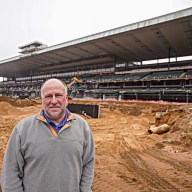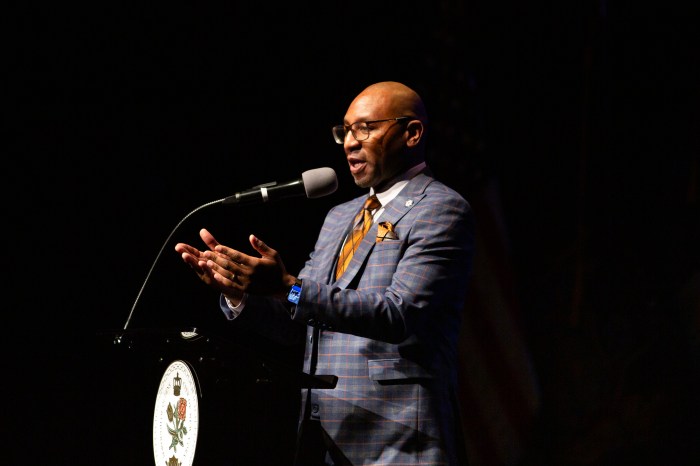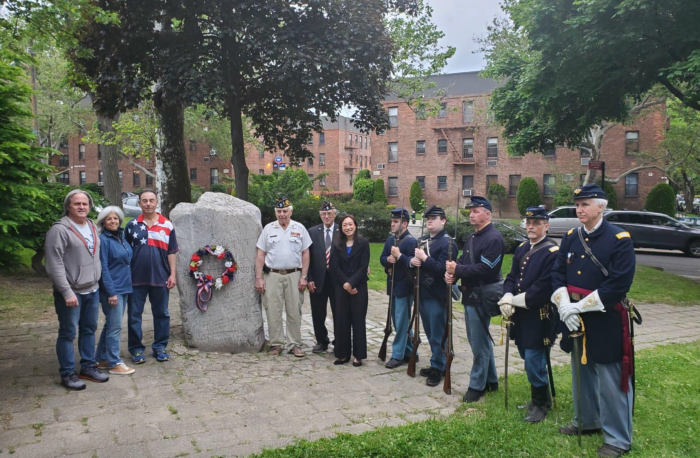By Kevin Zimmerman
Tall and blond, Katsura Sunshine looks like he should be relating Nordic tales rather than funny Japanese stories.
But Sunshine, who was born Gregory Robic, is one of the only Westerners practicing the ancient form of rakugo comic storytelling, which combines bits of Noh and Kabuki with a smattering of Jerry Seinfeld.
On Monday, Sunshine brings his act to LaGuardia Community College in Long Island City as part of his first North American tour.
Dressed in a traditional kimono and kneeling on a cushion, Sunshine’s performance begins with a comedic monologue, which segues into a traditional story from the 400-year-old rakugo canon.
“People should expect to laugh,” said Sunshine. “Rakugo is not very formal. You come out and for the first 20 minutes it is a lot like stand-up comedy. Then in the second half you become more of a storyteller.”
For the past five years, Sunshine has told stories for a living in Japan, which has been his home since he emigrated from his native Canada in 1999. In his previous life as Gregory Robic, Sunshine worked as a writer and composer creating musicals for the stage in Toronto. His pieces always dabbled in the ancients and in particular in the works of Aristophanes. The more he researched the origins of Greek theater, the clearer its connections to ancient Japanese drama became, Sunshine said.
Naturally, Sunshine lit out for the Far East to continue his studies.
One night, he wandered into his favorite local eatery just in time to catch a rakugo performance and he was hooked.
“Little did I know that my life was leading up to this,” said Sunshine. “It has comedy, tradition and ceremony. This was combining everything I was doing.”
About 700 performers work as rakugo storytellers in Japan today. And just like the other 699, Sunshine had to be accepted as an apprentice by one of the country’s masters. In his case it was Katsura Bunshi VI.
“My master is very famous. He is kind of like the Bill Cosby of rakugo,” said Sunshine.
As an apprentice, Sunshine spent his days cleaning his master’s home and ironing his kimonos. But he also learned how to be a rakugo storyteller by watching his master. He also began to memorize the 400 comic stories that make up the core of rakugo performing.
Although Sunshine hasn’t written his own stories yet, which is perfectly acceptable once the main tales are learned, he does a Japanese version of Abbot and Costello’s “Who’s on First?” back home.
But for his show in Queens, Sunshine plans to stick to the rakugo playbook.
“It is light-hearted and easy to understand,” said Sunshine. “And I hope the cultural part is an afterthought for the audience.”
































